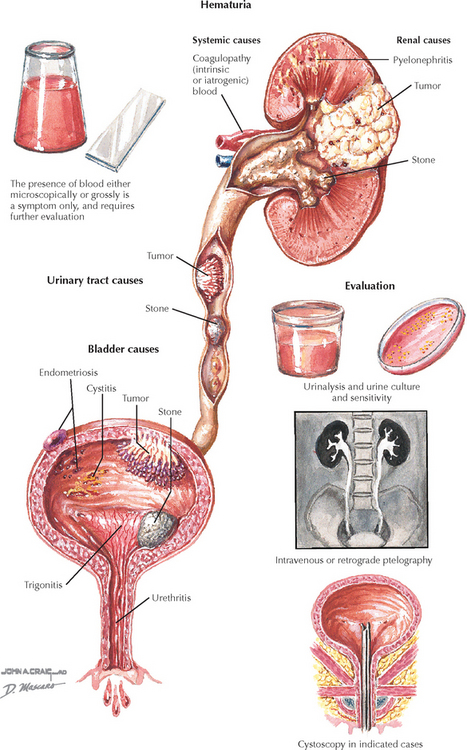Chapter 28 Hematuria
INTRODUCTION
ETIOLOGY AND PATHOGENESIS
Workup and Evaluation
MANAGEMENT AND THERAPY
FOLLOW-UP
Ahmed Z, Lee J. Asymptomatic urinary abnormalities. Hematuria and proteinuria. Med Clin North Am. 1977;81:641.
Ahn JH, Morey AF, McAninch JW. Workup and management of traumatic hematuria. Emerg Med Clin North Am. 1988;16:145.
Cohen RA, Brown RS. Clinical practice. Microscopic hematuria. N Engl J Med. 2003;348:2330.
Feld LG, Waz WR, Perez LM, Joseph DB. Hematuria. An integrated medical and surgical approach. Pediatr Clin N Am. 1997;44:119.
Foresman WH, Messing EM. Bladder cancer: natural history, tumor markers, and early detection strategies. Semin Surg Oncol. 1977;13:299.
Mahan JD, Turman MA, Mentser MI. Evaluation of hematuria, proteinuria, and hypertension in adolescents. Pediatr Clin North Am. 1997;44:1573.
McCarthy JJ. Outpatient evaluation of hematuria: locating the source of bleeding. Postgrad Med. 1997;101:125.
Pashos CL, Botteman MF, Laskin BL, Redaelli A. Bladder cancer: epidemiology, diagnosis, and management. Cancer Pract. 2002;10:311.
Rodgers MA, Hempel S, Aho T, et al. Diagnostic tests used in the investigation of adult haematuria: a systematic review. BJU Int. 2006;98:1154. Epub 2006 Jul 28
Rosenstein D, McAninch JW. Urologic emergencies. Med Clin North Am. 2004;88:495.
Tomson C, Porter T. Asymptomatic microscopic or dipstick haematuria in adults: which investigations or which patients? A review of the evidence. BJU Int. 2002;90:185.
Wai CY, Miller DS. Urinary bladder cancer. Clin Obstet Gynecol. 2002;45:844.








